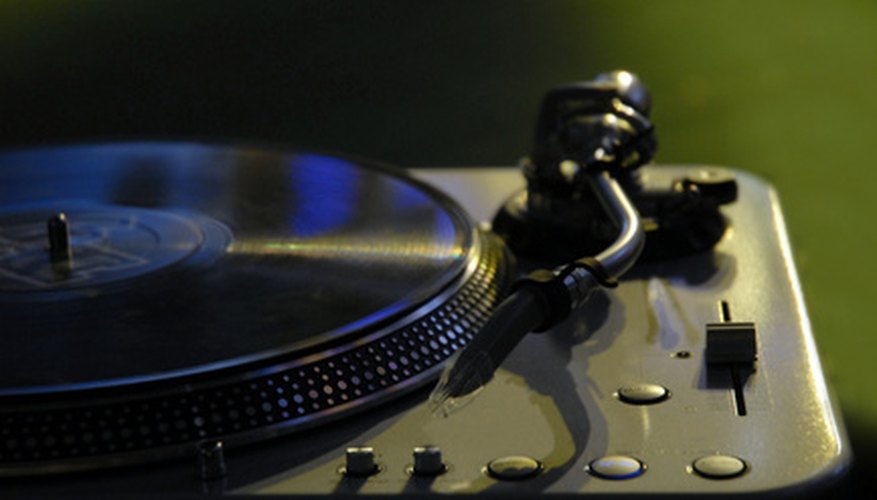Numark was founded in 1971 and has been making competitive DJ equipment ever since. With the introduction of the DJM 500 mixer, featuring a compact size and the innovation of the crossfader, Numark seemed to be setting a standard with quality equipment early. However, like all electronic products, problems eventually occur with newer models before being properly tested in the field. The Numark TTX1 turntable is no exception.
Platter
Two common errors with the Numark TTX1 turntable occur in the most important feature of the unit itself. Reported problems of the platter stopping or not starting on command give this device a questionable status for reliability. Another problem that occurs with the platter is its tendency to overheat during use. The underlying issue regarding an overheating platter lies in the lack of vents to cool off the platter as it rotates.
- Two common errors with the Numark TTX1 turntable occur in the most important feature of the unit itself.
- Another problem that occurs with the platter is its tendency to overheat during use.
Grounding
The output of a turntable is a key feature when translating audio from the groove of the record through the tone arm of the turntable and eventually through the output to the mixer. When there is a disruption in any of these components, the audio quality diminishes. The grounding of an electronic device is just as essential for connectivity to the mixer as the RCA outputs on the turntable. Grounding keeps electrical interference at a minimum. Since the Numark TTX1 is a digital turntable, there is no grounding wire included, therefore all of the grounding is internal on the unit. Feedback in audio arises when connected to the mixer, making this feature highly susceptible to noise problems.
- The output of a turntable is a key feature when translating audio from the groove of the record through the tone arm of the turntable and eventually through the output to the mixer.
- The grounding of an electronic device is just as essential for connectivity to the mixer as the RCA outputs on the turntable.
Torque motor
Numark advertises that its TTX1 turntable features a higher torque output than that of the Technics 1200 models. The torque of a direct drive turntable is the speed at which a platter can reach its intended revolutions from a standstill, or how a platter can retain its platter speed when using cue and scratch effects. With a high constant torque of 4.7kg/cm (kilograms per centimetre of force), a medium constant torque of 3.7kg/cm and a low constant torque of 2.5kg/cm, the turntable seems to have an advantage over other brands. However, the torque motor of the TTX1 suffers from a low humming noise, causing disturbance of sound after prolonged use.
- Numark advertises that its TTX1 turntable features a higher torque output than that of the Technics 1200 models.
- However, the torque motor of the TTX1 suffers from a low humming noise, causing disturbance of sound after prolonged use.
BPM Counter
With newer technologies in DJ equipment, some users have looked toward the BPM counter included with certain mixers, digital turntables and CD players on the market. This counter measures the beats per minute in the track that is playing, giving the DJ a better idea of how to mix two tracks together and adjusting the pitch accordingly. With the Numark TTX1 turntable, the BPM fluctuates in precision, which can confuse the user into thinking that a track is located at a certain tempo when it actually exists at a much different speed. With this problematic feature, users should be cautioned to not take the BPM counter as an absolute measurement.
- With newer technologies in DJ equipment, some users have looked toward the BPM counter included with certain mixers, digital turntables and CD players on the market.
- With the Numark TTX1 turntable, the BPM fluctuates in precision, which can confuse the user into thinking that a track is located at a certain tempo when it actually exists at a much different speed.
